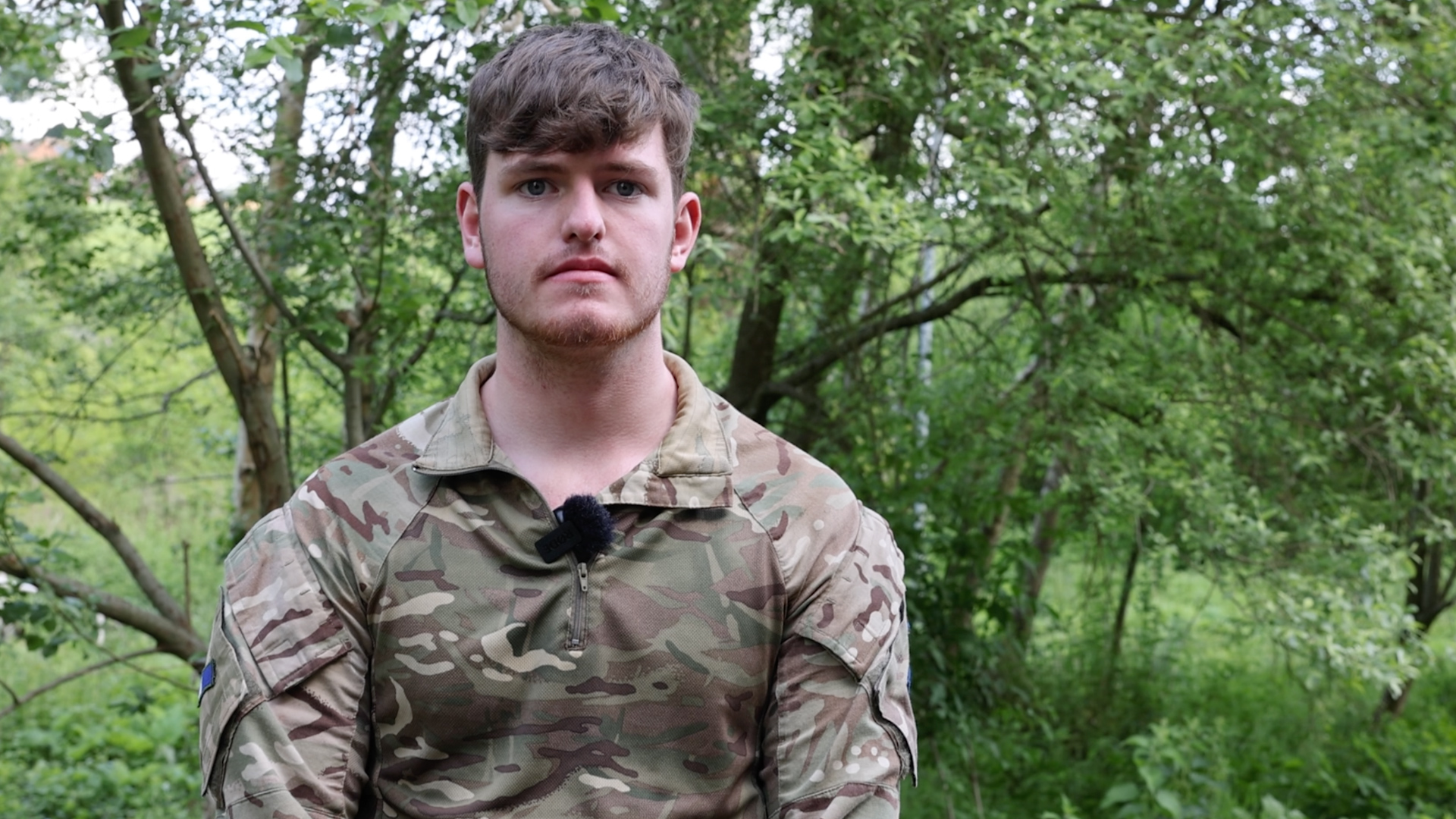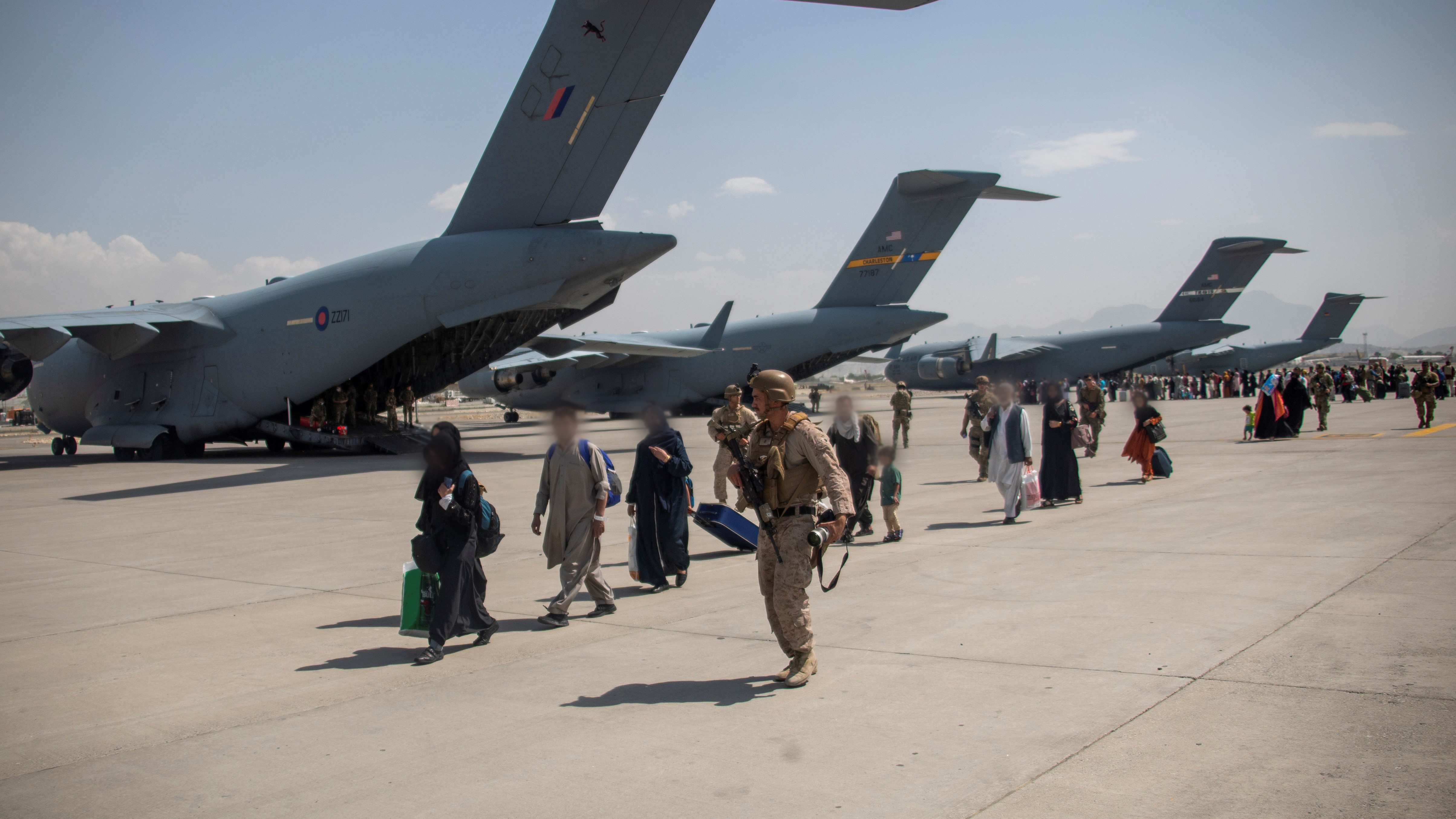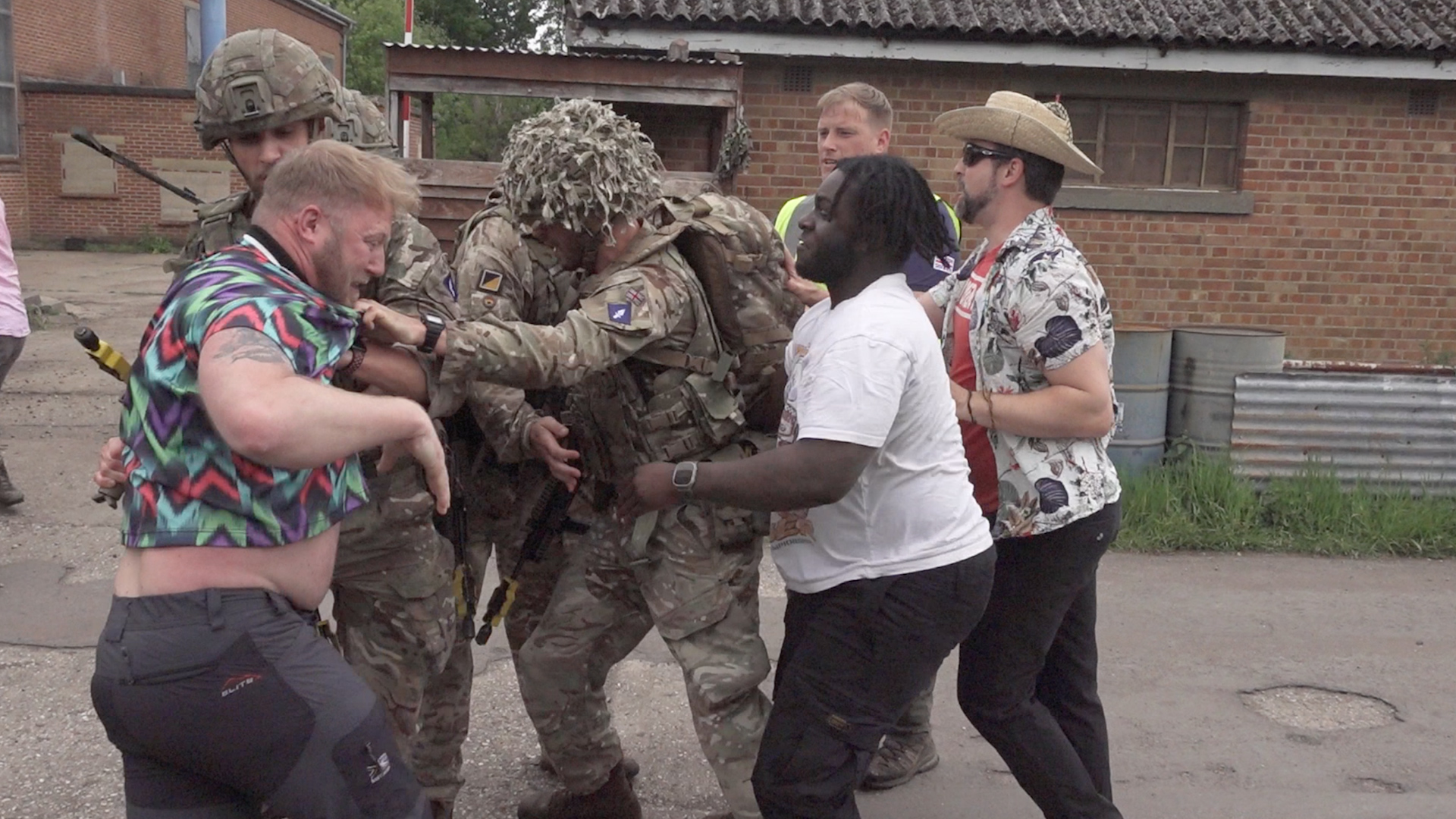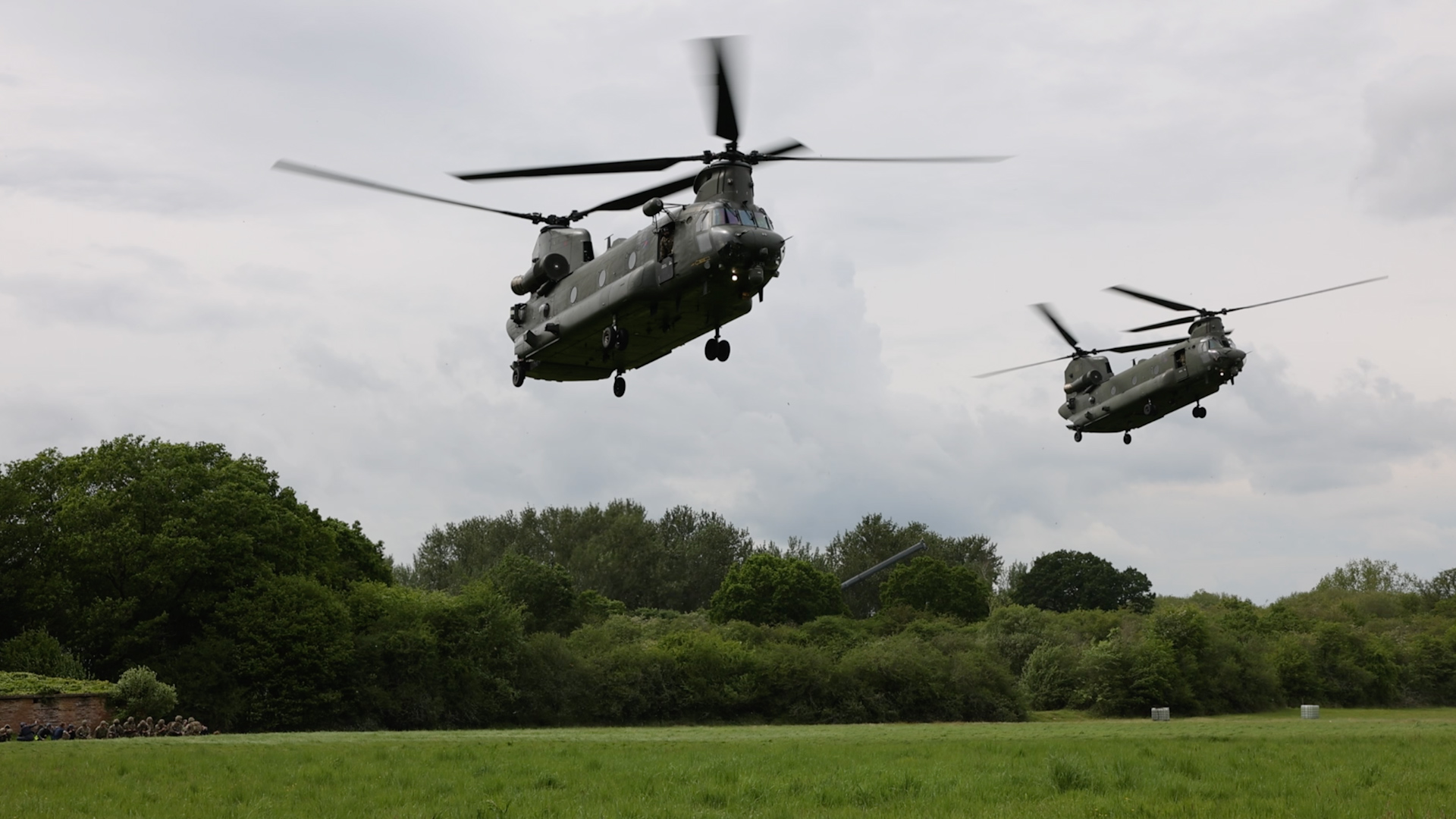Defence's best-kept secret: Meet the personnel deploying into danger at a moment's notice
You've likely never heard of the Joint Force Headquarters, a tri-service defence organisation known as the JFHQ.
Yet you will have heard about their work, especially when they are tasked, as they often are, to respond to major international incidents or humanitarian disasters.
In recent times, their teams have assisted UK diplomats leaving Ukraine following Russia's illegal invasion, responded to major earthquakes in Turkey and Morocco, and evacuated British nationals from Sudan to safety.
Perhaps most notably, JFHQ masterminded Operation Pitting – the UK evacuation of Kabul in 2021, after a resurgent Taliban took back control of Afghanistan.
Described by officials as defence's "first responders" to any crisis worldwide, JFHQ draws its strength from across the Armed Forces and is supported on its operations by partner agencies, including the UK Border Force and the civilian police services.
Forces News was granted exclusive access to JFHQ's major annual exercise, the first time a news organisation has been given such an insight into this vital defence organisation.
A lot to think about
The exercise sees its newest members tested against scenarios based on possible, and even likely, future threats.
It's an exercise that gradually builds, based on a scenario that the team has been deployed to a country somewhere in Eastern Europe that has fallen into political turmoil.
As the exercise unfolds, the scenarios on the ground grow gradually more dangerous. It's very realistic, and as we would observe, very aggressive.
On day one we met 19-year-old Signaller Joe McIntyre from Liverpool who, having served in the British Army for three years, is embarking on a two-year posting to JFHQ which will act as a major challenge in what is the early part of his military career.
A day later, after his team had come under heavy fire at a compound where they were conducting a meeting with a UK national, the Royal Signals soldier described how he found the scenario.
"There's a lot to think about, there's a lot that goes through your head," he told Forces News.
"You get this rush of adrenaline. But then once you've calmed yourself down you can then go through your steps and realise what you need to do."

The scenario Signaller McIntyre and his new colleagues had just faced was a surprise attack on what should have been a routine visit to a location.
They were initially hit with simulated indirect fire (mortars) and then shot at with machine gun fire from two raised positions.
As they began to return fire from their vehicles, white civilian pick-up trucks, the exercising staff surprised the troops further by deploying simulated casualties performed by actors who had previously lost limbs, thus making the scenario as realistic as possible.
It was a confusing and fast-paced incident, which ultimately acted as a wake-up call for those on the exercise.
"Everything's ramping up pretty fast. It's definitely getting exciting now," Signaller McIntyre added.
Facing the unexpected
Later that evening, and having recovered from the attack at the compound, the teams again found themselves dealing with something unexpected.
This time it's a helicopter crash which again included the use of actors wearing bloodied makeup and missing limbs.
For the scenario, a real crashed Lynx military helicopter with pyrotechnics and sound effects from hidden speakers adds to the realism.
In the dark, and with the arrival of a group of other actors playing disgruntled locals, the troops are stretched to their limits.
At the after-action review, there are learning opportunities and words of encouragement from the staff leading the exercise.
This is a hard training experience, but the personnel are reminded that on the ground, in a real-life situation like the evacuation of Kabul, dangers and threats will come at them constantly.

Op Pitting was a deployment that will be pored over by historians for decades. Away from the political criticisms of Western nations opting to pull out of Afghanistan, once that decision had been made by presidents and prime ministers, it fell to service personnel from both sides of the Atlantic to deliver.
Colonel Chris Head is JFHQ's Chief of Staff. A decorated infantry soldier in his own right, he explained that it was JFHQ that masterminded the operation from a British perspective.
"Our diversity is our biggest strength in Joint Force Headquarters," Col Head told Forces News.
"The fact that we have people, including civil servants from every corner of defence, brings a really rich and varied set of skills, experience, and important contacts as well.
"So I guarantee, whatever problem we face, there's either someone in the headquarters who knows how to solve it, or if they don't, they know the person to speak to.
"Our network across UK defence and indeed across Whitehall is massive and really important."
Gruelling end to a demanding exercise
The final day of the exercise brought with it the most physically demanding challenge, and from what we observed, the most intense from a security and threat perspective.
In a set-up not too dissimilar to the pop-up facilities needed at an airport to conduct an evacuation, say in the likes of Kabul, JFHQ personnel are manning a centre that's processing UK nationals and eligible locals to safety.
It's a multi-agency event, with civilian police officers and UK Border Force officials assisting in the facility, which requires those hoping to be evacuated to be properly identified, something that takes time and, for the locals concerned, an element of patience.

In what is already a highly contentious environment, matters are made worse when, due to security concerns, the teams are told to stop processing local civilians, and instead focus the remaining time on the evacuation of British embassy officials.
The news is met with anger.
Outside the building, an angry mob, far angrier than mobs seen earlier in the exercise, begins to hurl abuse.
Soon, scuffles between JFHQ personnel and the crowd break out. The situation quickly gets out of hand resulting in an order to shut the facility down and withdraw to a helicopter landing site, where the personnel will be picked up.
This final and most aggressive stage of the scenario and, in fact, the exercise as a whole, involved the troops engaged in what occasionally felt like hand-to-hand fighting to get everyone out of danger.
To help make the incident as realistic as possible, actors and military personnel from other units play along as the enemy. And they don't hold back.
After what seemed like a prolonged period of tussling and struggling which, on two occasions, included the opening of fire by personnel to save colleagues from being isolated and potentially kidnapped – all under exercise conditions – the troops made it to the helicopter landing site.

Shortly after, two RAF Chinooks arrived and took the JFHQ teams to safety.
While in the air, End Ex is called and the week-long scenarios are brought to an end.
In the aftermath and back on land, Signaller McIntyre spoke to us again summing up how he felt his test week on exercise with his new JFHQ colleagues had gone.
"It was pretty hectic," he said. "But it's about taking a minute, taking a breath and calming yourself down.
"From there, you can work together as a team to push through as a force."
Signaller McIntyre and the other new members of the team now find themselves rotating through what's known as the duty roster, which will see them deployed at a moment's notice should they be required.
They have their bags packed, they are primed and ready to go.
And given the nature of the geopolitical landscapes of multiple regions globally and the propensity of natural disasters such as earthquakes and hurricanes, JFHQ deployments are a matter of when not if.
JFHQ is ready and waiting.









